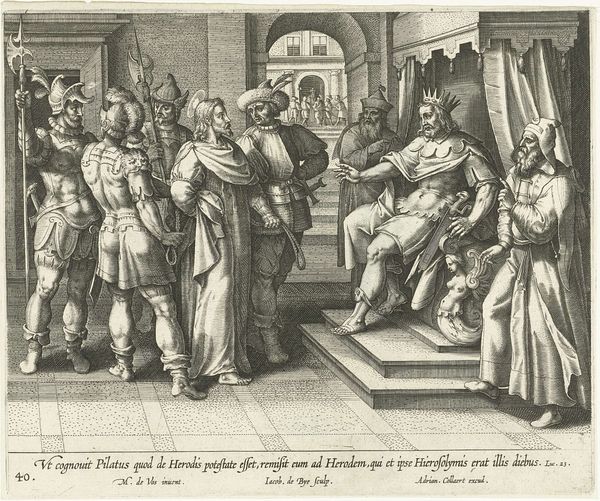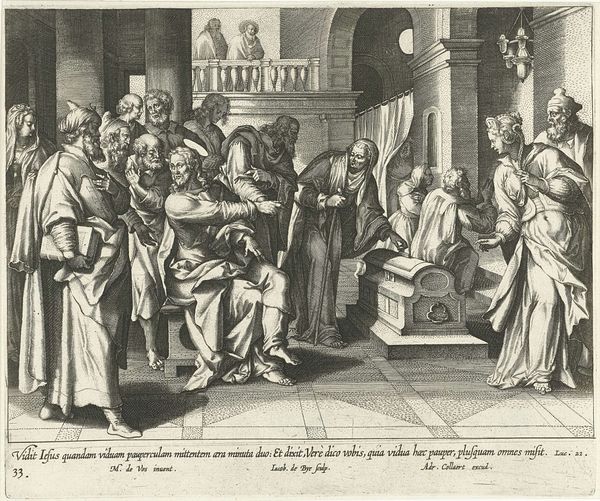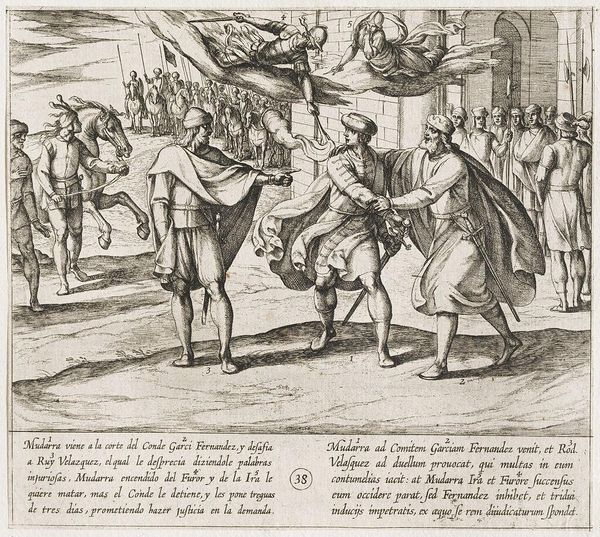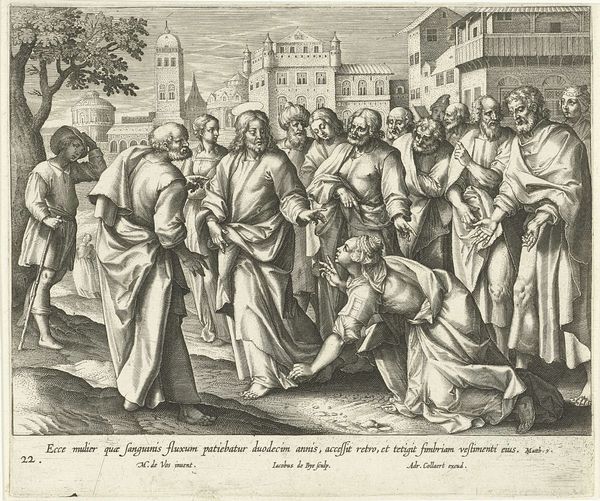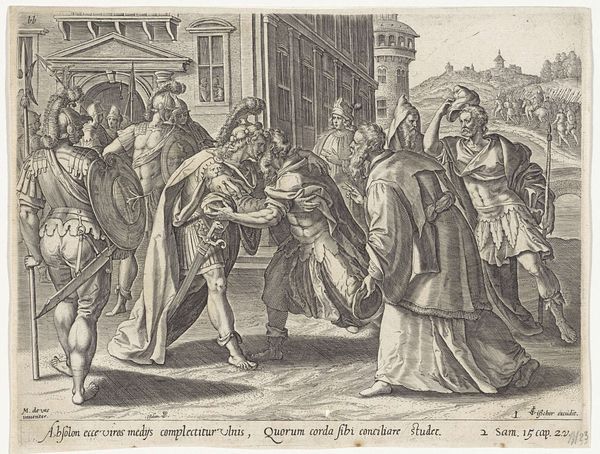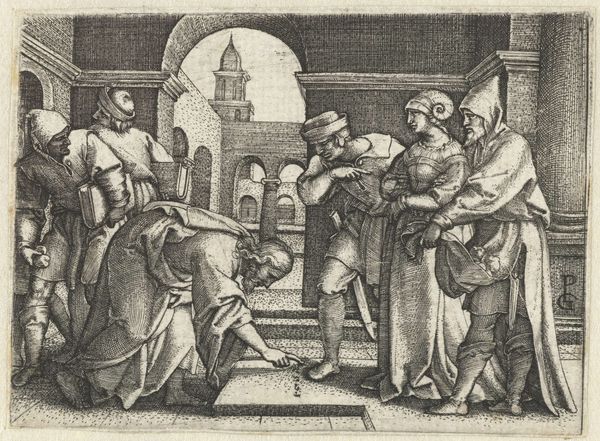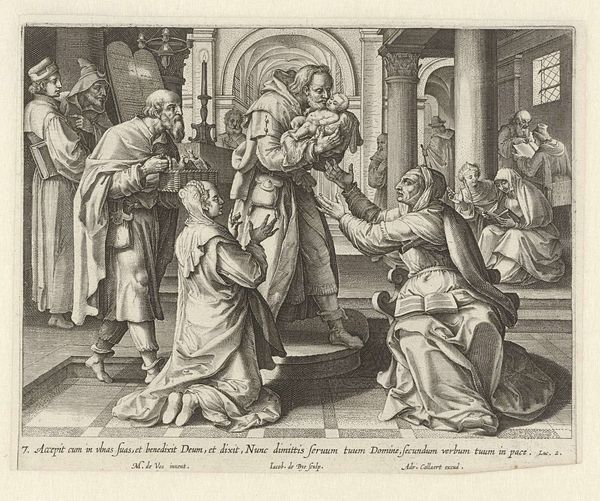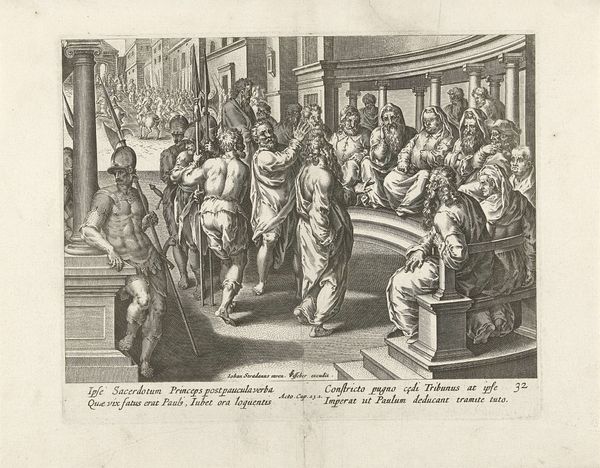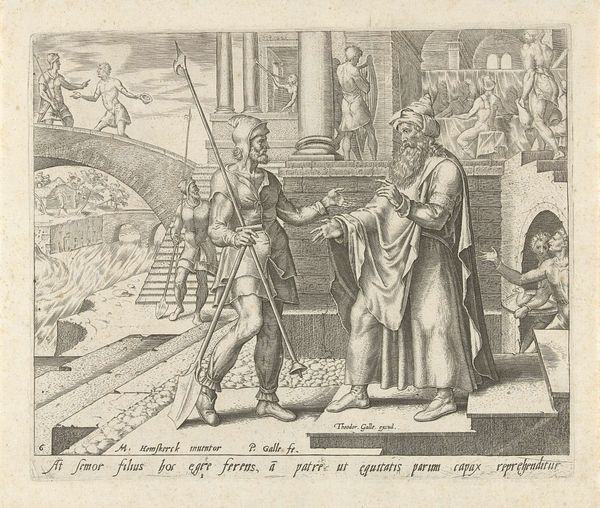
print, engraving
baroque
old engraving style
caricature
figuration
history-painting
engraving
Dimensions: height 179 mm, width 220 mm
Copyright: Rijks Museum: Open Domain
Editor: This is "Healing of the Man at the Pool of Bethesda" made between 1598 and 1618 by Jacques de Bie. It’s an engraving, so just black lines on white paper. I’m struck by the dramatic way the artist uses light and shadow. What symbols or meanings do you see embedded in this scene? Art Historian: The drama is certainly a hallmark of the Baroque, isn’t it? Looking at this engraving, several layers of symbolism come to mind. Firstly, consider the pool itself – the Pool of Bethesda. Water is a powerful symbol, isn’t it? Often representing cleansing, rebirth, and healing in various cultures and spiritual traditions. In this context, the pool takes on a specifically Christian connotation as a site of divine intervention. Editor: Right, it’s a miracle. And the man carrying his bed… he's made whole. Art Historian: Exactly. The bed becomes a potent symbol too – a former burden, now a testament to his restored health and faith. Notice how the figure struggles yet appears triumphant carrying it? And have you considered the figures surrounding Christ? What might they signify? Editor: I see them looking… judgmental? Skeptical, even? Maybe representing those who doubted Jesus' power. Art Historian: Precisely. They act as a visual counterpoint, highlighting the transformative power of faith against the backdrop of doubt and societal norms. Even the classical architecture... does that evoke a certain feeling in you, given the biblical context? Editor: It’s unexpected, yeah! A grand setting for an act of divine intervention. I never really thought about prints having such deep layers. Art Historian: Well, visual language is universal and lasting. I think recognizing the intent is half the battle. Editor: That's insightful, I will definitely be using that approach from now on. Thank you.
Comments
No comments
Be the first to comment and join the conversation on the ultimate creative platform.
